Introduction
Over the past years, tourism has been affected by several unpredictable events such as political unrest, financial crises, natural disasters, health epidemics among other factors with negative impacts on the tourism industry. Over the recent years, terrorism attacks in Europe have become rampant and have gained a lot of media attention which further raises anxiety and fear among travelers. Ajaka (2015, p. 86) affirm that terrorism is now a great threat to the tourism industry in Europe. Although terrorism is not a new threat in Europe, its severity and prevalence have increased over the recent years thus raising concern from businesses such as hotels and restaurants that depend on the tourism (White 2016, p. 203). This section introduces the concept of terrorism and how it impacts the tourism industry with Brussels as the case study.
Background and Justification of the Report Idea
Reports indicate that the tourism industry is one of the fastest growing and promising sectors globally, but it is also one of the most delicate sectors (Luxton 2016, p. 25). In the contemporary business world, there are emerging uncalculated threats and risks such as terrorism which have raised concern because of their potential of reducing the number of tourist arrivals in a country. For instance, tourism in the Middle East is no longer attracting people into this region because of terrorism and terror groups associated with the Middle East (McGovern 2016, p. 12;). The “Holy War” has gone beyond the Middle East borders. Brussel terrorist attack is one of the deadliest terrorist attacks that occurred in Paris on November 13th, 2015 compared to other terrorist attacks in other parts of Europe (Santana-Gallego, RossellÃ-Nadal, and Fourie 2016, p. 291; Hong (2015, p.307).
The 2016 Brussels airport attack turned Brussels into a scene of terror after terrorists killed 31 persons and wounded hundreds of the travelers as well as the staff at the airport and later on, ISIS claimed responsibility for this attack (Hume et al. 2016, p. 39). In this case, it is true that terrorism is no longer a problem of the Middle East, but it has spread out to the European countries (Moklyak 2016, p. 147). The mass media has also played a critical role in the rise and spread of the Islamic State and this is associated with the uncontrolled use of the social media which makes it easier for terrorists to recruit members and have an easier and faster means of spreading propaganda. Media outlets such as online news platforms, social media, and television news may influence a person’s decision-making process (Chowdhury, Raj, Griffin, and Clarke 2017, p. 5). However, to what extent does terrorism affect a person’s travel behavior patterns?
Justification of the IB Topic and Research Gap
Reports indicate that the tourism sector is one of the promising industries that generate substantial revenues to the economy. However, this sector faces many threats and among them is the threat of terrorism. Over the recent years, terrorism has proved not to be the problem of the Middle East because of the frequent attacks even in non-Muslim countries (Hume et al. 2016, p.17). In a study, Ajaka (2015, p. 17); McCulloch, Frantz, Geringer and Minor (2012, p. 19) affirm that terrorism is now a problem of the world and everybody is at risk. However, most studies have focused on explaining the collective effects of terrorism on the tourism, but the component of how risk pervasiveness influence a traveler’s decision to tour a particular destination has not been given significant attention. Reports indicate that over the last two years, the number of tourists arriving at Paris have reduced and this is believed to have been caused by the fear that tourists have developed following the March 2015 terrorist attack. Thus, there is a need to understand how terrorism affects the tourism industry and recommend possible strategies to counteract the effects of terrorism.
Research Objective and Organization of the Report
This research aims at understanding how the perceived risk of terrorism impacts the tourism industry. The first part of the paper provides a critical overview of terrorism and its effects on tourism across the globe. Next, the literature review examines the theoretical framework and develops the research gap for this study and analyzes the risk of decision-making to a travel destination. The third part presents the methodology of the data collection strategy, data sources, and variables selected for this study. The other one is the data analysis and findings step. Finally, the report gives the conclusions and recommendations.
Literature Review
A Critical Overview of the Risk of Terrorism on Tourism
People’s ability to travel globally for enjoyment is not a new concept; however, the issue of tourists’ safety is a relatively new concern across the world. Reports indicate that about 3.5 percent of the world’s population travel internationally to explore, relax, and discover new places (“World Travel & Tourism Council 2014a, p. 356”). The tourism sector has become one of the most popular sectors for any country because it is associated with low pollution and energy consumption levels (Altindag 2014, p. 7). In fact, international tourism is accepted as one of the world’s largest revenue generators in developed and developing economies. For developed economies such as the United States, the tourism sector generates approximately 8.5 percent of the U.S. GDP (“World Travel & Tourism Council 2014c, p. 387”). Currently, Brazil is ranked 6th out of the 184 countries that depend on tourism whereby international tourism generates about 9.2 percent of the country’s GDP (World Travel & Tourism Council 2014b, p.198). Reports indicate that several factors contribute towards the reluctance of tourists from visiting other regions and among them is that tourists don’t want to be bothered by negative inhibitors, cancellation of events, faulty adventure equipment, and the risk of insecurity (Wolff, K. and Larsen 2014, p. 205).
A Critical Overview of Empirical Literature and Business Analytics
Reports indicate that the operating environment for tourism has changed over the recent years following the terrorist attacks in several parts of the world (Gina and Katia 2017, p. 8). These attacks have become significant threats to international travelers and this implies that there is a need for the tourism industry to realize that terrorism has become an integrated risk for the industry (Botelho, Cruickshank, and Shoiche 2015, p. 4). When choosing a travel destination, the image, and perception of a traveler about a particular region and the threat associated with that place influence a tourist’s choice of the destination (Picardo 2016, p. 102). For instance, reports indicate that tourists are afraid of traveling to Paris because of the March 2015 terrorist attacks (Evidence at the appendix).
In a study, Baker (2014. P. 111) discusses two terms; inhibitors and facilitators in which he refers facilitators to the destination attributes which help in satisfying a tourists’ motives, whereas inhibitors refer to the non-congruent factors to the tourists’ motives. Tourists make decisions about visiting a particular region or location based on these inhibitors or facilitators. Facilitators have a great influence during the initial stages of decision-making, whereas inhibitors influence a tourist’s decision at the end of the process of decision-making, especially when outcomes become more serious (Jackson 2016, p. 212). Additionally, Gretzel, Sigala, Xiang, and Koo (2015, p. 22) developed a decision-making framework with which external influence of terrorism on the process of decision-making affects tourists’ decision to travel, and the researcher succeeds in her analysis by applying literature from psychological tourism on risk perception theories.
When talking about the quality of life, Lepp and Gibson (2016, p. 112) say that terrorism is the opposite of tourism for several reasons. For example, whereas tourism evokes enjoyment, living, and relaxation, terrorism evokes a feeling of fear, death, panic, and destruction. Terrorism is the act of violence with which terrorists use to collect a ransom, overthrow a government, punish non-believers of a particular religion, and impart revenge on the opponent for imagined wrongs (Ball, Geringer, McNett & Minor 2013, p.34). Research indicate that there has been a shift from political terrorism to religious terrorism over the recent years, especially in Muslim countries but this has also spread to the other nations across the world (Botelho, Cruickshank, and Shoichet 2015, p. 102). Terrorism affects the travel industry by higher margins (Buckley and Klemm 2013, p. 194-198). Terrorists attack with the aim of instilling fear by threatening the security of the other people and these threats have adverse effects on tourism in the areas that the attacks take place (World Travel & Tourism Council 2014a, p. 198-203). Hence, when deciding the areas they want to visit, tourists take into consideration risks such as victimization, and in this case, the persons will choose to visit safe places compared to unsafe places (Altindag 2014, p. 34). In his theory of “Hierarchy of Needs,” Maslow indicates that safety is one of the basic needs which people must achieve before attaining self-actualization (Schroeder and Pennington-Gray 2015, p. 391).
In a study, Buckley and Klemm (2013, p. 196) establish that there is a positive relationship between Abraham Maslow’s theory and a person’s decision to tour a place and says that before a person thinks of self-attainment, his or her safety takes precedence. Though terrorism is not a problem of the 21st century, the prevalence has however increased over the recent years, and this condition has forced the travel industry to adapt and offer terrorism insurance coverage (Dredge and Gyimóthy 2015, p. 22).
Research highlights four sources of economic costs of terrorism which include the loss of revenues, a decline in the future stock capital, destruction, of infrastructure, and opportunity of preventing terrorism (Hume & Sanchez 2016, p. 234). Aside from these direct costs associated with terrorism, other hidden costs include additional advertisement costs which are meant to attract new or more visitors to the region, security enforcement expenses and reconstruction costs for the damaged infrastructure (Johnston 2017, p. 68).
Conceptual Framework
A conceptual framework is a representation of the researcher’s synthesis of literature on how he or she will explain a particular phenomenon under study. It maps all the actions required in a survey by applying what has been covered in previous studies. Additionally, it is the researcher’s understanding on how the study variables relate with one another. A conceptual framework sets the stage for the understanding and presentation of the research question that pertains to a particular problem statement (Brannen 2017, p. 89). In this study, the researcher has identified three independent variables which include media coverage, risk pervasiveness, and terrorism whereas the dependent variable is tourism. From the literature, it is evident that for the tourism industry to grow, there must be a positive perception about the travel destination regarding the tourists’ safety. The researcher believes that the following framework explains the relationship between tourism and risk pervasiveness, terrorism, and media coverage.

Methodology
Data Collection Strategy
Research may be conducted either by using a qualitative or quantitative research design depending on the needs of the study. A quantitative research design focuses on objectivity and involves collecting and analyzing numerical, statistical, and mathematical data (Sandler 2014, p. 262). A quantitative research design aims at establishing the relationship between a dependent and independent variables in a target population. A quantitative research design is either experimental or descriptive (Brannen 2017, p. 8). A quantitative research is empirical and guarantees the study’s validity through clarification. On the contrary, qualitative research design is any other method whose findings are arrived at without following any quantitative means (Rahman 2016, p. 67).
By considering the aim of this study of understanding the impacts of terrorism on the tourism industry, the researcher has chosen the quantitative research design for the study.
Data Sources and Data Variables
The data for this study is obtained from the World Travel Report about a study done in Paris in 2016. The information is collected from secondary sources from the World Travel Report 2017and presented in the descriptive form. In this study, the dependent variable is tourism whereas the independent variables are terrorism, media coverage, and risk pervasiveness.
Data Analysis Strategy
The quantitative data is then analyzed by the use of SPSS to get statistical and factual information. The dependent variable for this study is tourism whereas the independent variables are terrorism, media coverage, and risk pervasiveness.
From the data, the researcher performs a regression, correlation, and frequency analysis, to establish how terrorism impacts the tourism industry. The report uses data obtained from 100 respondents.
Data Analysis and Findings
Descriptive Data Analysis Including Visualizations
Data analysis refers to the process of examining and transforming the collected data to help the researcher find solutions for the research question (Johnson 2017, p. 17). The nature and type of the research influence the kind of data for that particular problem. With this analysis, a researcher finds it easy to structure the findings obtained from the study as well as the questionnaire. According to Johnson (2017, p. 18), the data analysis step is a necessary step because it helps to filter out the unnecessary information and establish a strong foundation for making important decisions.
Table 1: Frequencies and cumulative frequencies of the age of the respondents. Source: World Travel and Tourism Report.
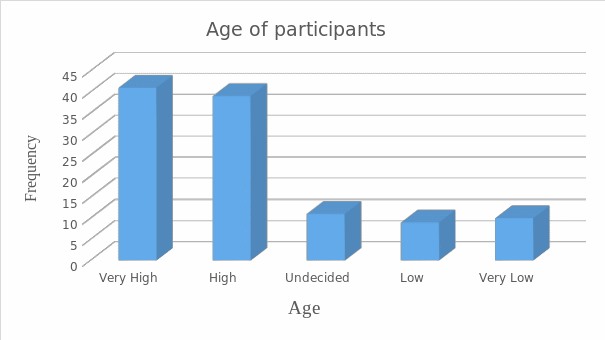
Table 2: Gender of the participants.
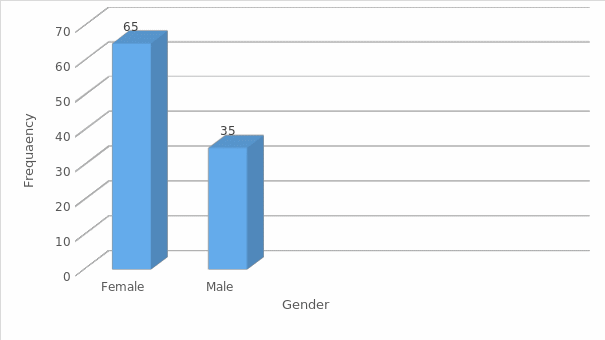
Table 3: Occupation of the participants. Source: World Travel and Tourism Report 2017, p. 211.
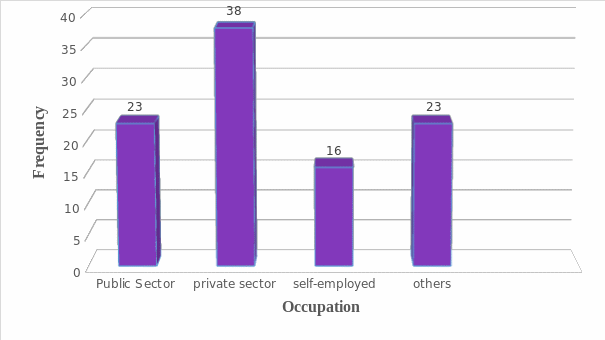
Table 4: How often do the respondents travel outside Ireland? Source: World Travel and Tourism Report 2017, p. 211.
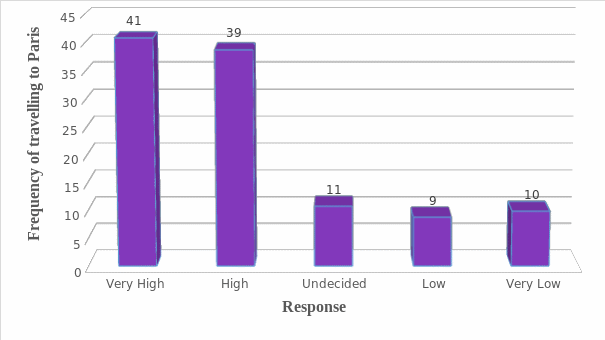
Table 5: The General purpose of travel. Source: World Travel and Tourism Report 2017, p. 211.
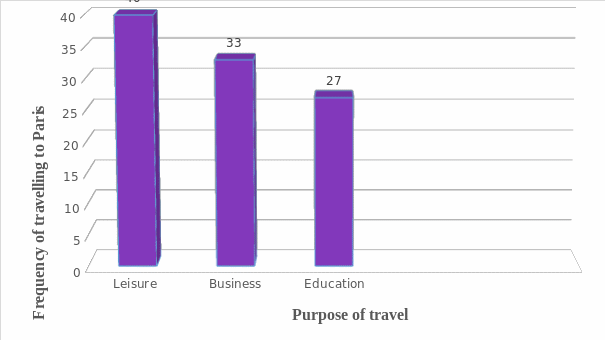
Table 6: Have participants visited Paris? Source: World Travel and Tourism Report 2017, p. 211.
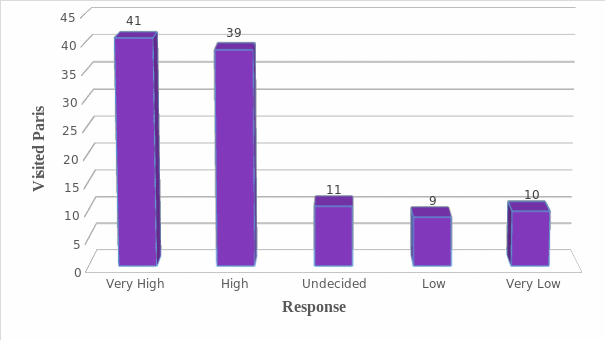
Were the participants aware of the November 2015 terrorist attack?
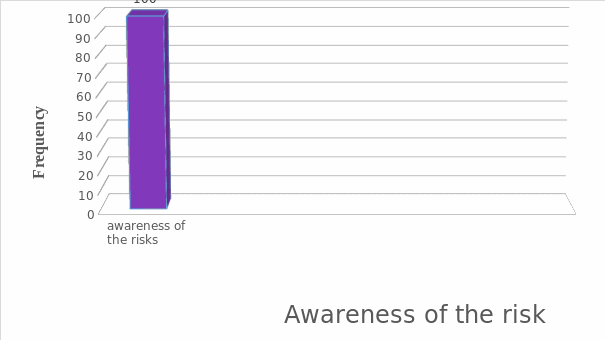
Table 7: Did the participants visit Paris after they heard about the November 2015 terrorist attack? Source: World Travel and Tourism Report 2017, p. 211.
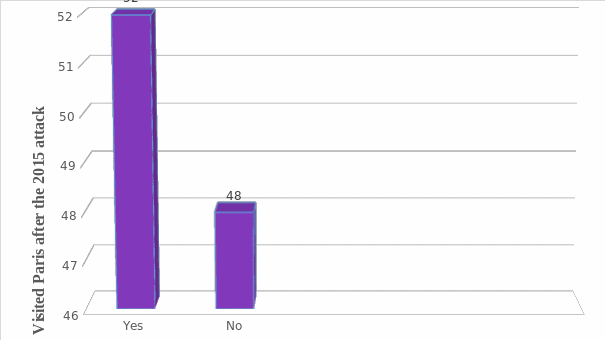
Table 8: Were the participants concerned about their security on visiting Paris after the attack? Source: World Travel and Tourism Report 2017, p. 211.
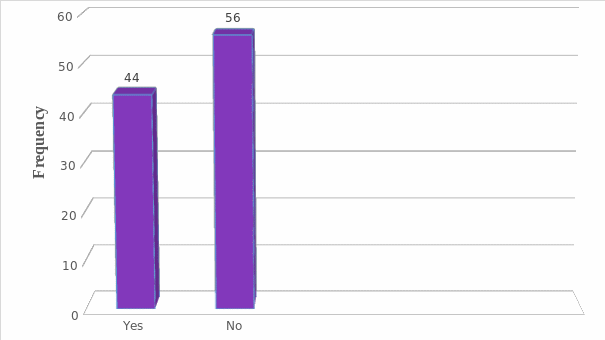
Table 9: Do the participants agree that tourist destinations are branded? Source: World Travel and Tourism Report 2017, p. 211.
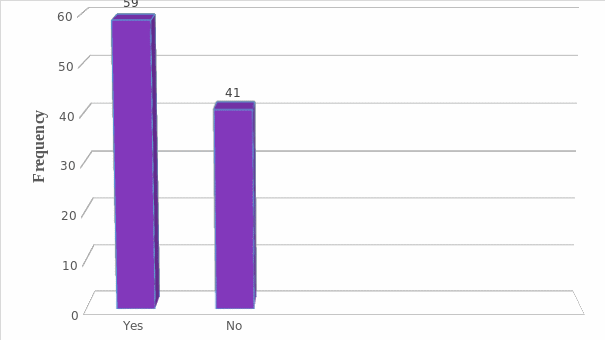
Table 10: Do participants agree to visit areas that have been affected by terrorist attacks in the past two years? Source: World Travel and Tourism Report 2017, p. 211.
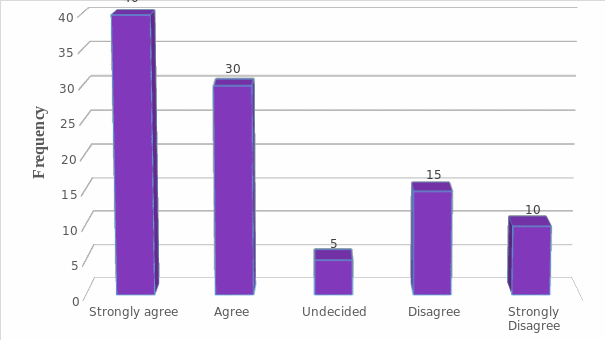
Table 11: Do participants hesitate on visiting areas that are prone to terrorist attacks? Source: World Travel and Tourism Report 2017, p. 211.
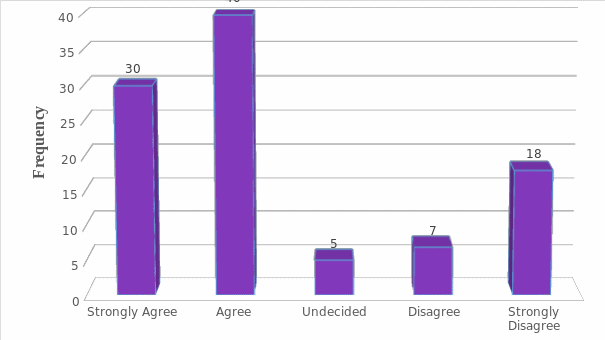
Table 12: The Participants view about the extent of the perceived risk in Paris in relation to the actual risk. Source: World Travel and Tourism Report 2017, p. 211.
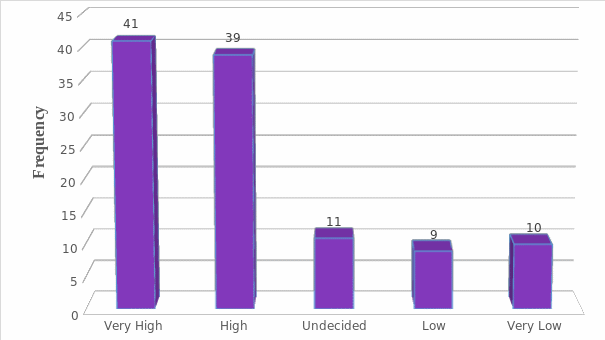
These results indicate that tourists believe that they are less likely to be victims of terrorist attack compared to the general perception which is generally high. The data also collected views about the relationship between perceived risk and the number of tourists visiting an area.
Table 13: Participants’ view of the connection between perceived risk and the number of tourists visiting a tourist destination. Source: World Travel and Tourism Report 2017, p. 211.
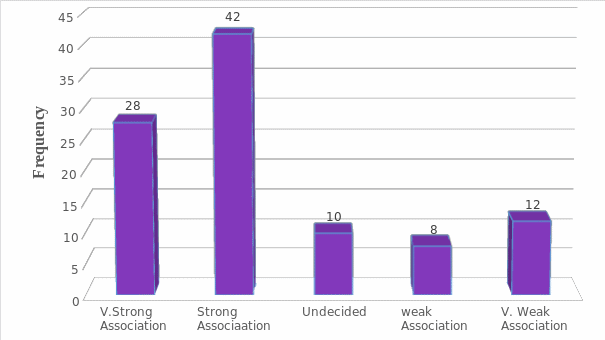
Table 14: The participants’ view that the media plays a critical role in promoting tourist destinations. Source: World Travel and Tourism Report 2017, p. 211.

The results from this analysis indicate that majority of the participants believe that media has a critical influence on risk traveling to a particular travel destination which is prone to terrorist attacks. Thus, it can be inferred that media has substantial control over a person’s decision to travel. The results show that media coverage has strong effects on decision-making process of travels. In this case, it can also be inferred that branding and marketing has a strong influence on tourists’ decision regarding travel destinations.
Preliminary Results for Inference and Data Modeling
Correlation analysis
Correlation analysis explains the relationship between two variables and the extent to which one variable changes as a result of a change in another. In this study, the dependent variable is tourism whereas the independent variables are perceived risk, media, and terrorism. From the analysis, Pearson’s correlation coefficient between tourism and terrorism is 95.2 percent, and this implies a strong relationship between terrorism and tourism. Additionally, the correlation coefficient between tourism and perceived risk is 92.4 percent which also suggests an active link between tourism and perceived risk on tourism. Furthermore, Pearson’s correlation coefficient between media coverage and tourism is 93.3 percent, and this also implies a strong relationship between tourism and media coverage.
Correlations
4.2.3Regression. Despite correlation analysis shows the degree to which one variable changes as a result of a change in another variable, it does not tell the impact of the independent variable on dependent variable. In this case, the correlation needs to be backed up with a regression analysis. A regression analysis tells how much a unit change in independent variables impacts the dependent variable. This implies that the regression model is sound and it can account for 92.4 percent of the variability in tourism. Additionally, the ANOVA table shows that media coverage, tourism, and perceived risk are statistically significant since they are less than.05.
The beta value between terrorism and tourism shows that there a unit change in terrorism will cause 52.4 percent. This is a statistically significant value which shows that terrorism has a significant impact on terrorism. The beta value between terrorism and perceived risk indicates that a unit change in terrorism causes a 22.5 percent change in tourism, whereas a unit change in media coverage causes a 27.2 percent in tourism. The model table below gives a summary of the regression in which the coefficient of determination of the regression model is 92.4 percent.
Variables
Model Summary
ANOVA
Coefficients
Conclusion
The study aims at establishing the impacts of terrorism on tourism industry with reference to Irish tourists and after the recent attacks in Ireland. The research indicates that a terrorist attack has a significant negative relationship with tourism and choice of destinations. It also establishes that tourists are aware that branding and marketing of tourist destinations influence a tourist’s decision to travel to such places. The recent terrorist attacks in Europe have affected Ireland as a tourist attraction destination over the recent years. In contrast of the perceived risk, tourists believe that they are unlikely to fall victims of terrorist attacks in Ireland.
Additionally, the research indicates that negative media influence has a substantial influence on a tourist’s decision to travel because tourists consult with news and other media sources before they make a decision to travel. Despite the negative perception the media portrays people still develop a positive perception about the city of Paris, and this may be associated with positive branding as well as media coverage provided to the public about the region. Moreover, it is evident that tourists are likely to respond positively to the positive media coverage and marketing activities. With these regards, it is evident that positive media portrayal will reduce the perceived risk and terrorism attacks which may discourage tourists from touring a particular destination. Although the study does not show whether tourism can be impaired or enhanced, based on the previous literature, it is evident that perceived risk is less serious compared to actual risks.
Recommendations
Based on the research findings, it is evident that perceived risk affects tourist’s decision to travel and this implies that the government must invest in security to build tourists’ confidence and ensure that their safety is guaranteed. Additionally, for countries to increase the number of tourist attraction to their region, they need to market and brand their countries as tourist destinations. To achieve this aim, they should engage the media which will help them to counter the negative effect of negative media publicity. Moreover, governments may partner with private tourist businesses as well as the business community to provide them with support where necessary. In this case, government intervention may take different forms. For instance, the government may train the business community on the measures they may take to increase strengthen the security within their businesses. Tourist attraction sites may provide services such as free access to Wi-Fi services to have tourists use free Wi-Fi. Furthermore, Ireland may organize cultural events and publicize them to show the world that the country is secure and that the government’s security measures are functioning.
References
Ajaka, N 2015, ‘Paris, Beirut, and the language used to describe terrorism’, The Atlantic, Web.
Altindag, DT 2014, ‘Crime and international tourism’, Journal of Labor Research, vol. 35, no. 1, pp. 1-14.
Baker, DMA 2014, ‘The effects of terrorism on the travel and tourism industry’, International Journal of Religious Tourism and Pilgrimage, vol. 2, no.1, pp. 9.
Ball, DA, Geringer, JM, McNett, JM & Michael, S, Minor (2013). International Business: The Challenge of Global Competition, 13th edn, McGraw-Hill Higher Education, London.
Botelho, G, Cruickshank, P & Shoichet, CE 2015, ‘Beirut suicide bombings kill 43; suspect claims ISIS sent attackers’, CNN.com, Web.
Brannen, J 2017. Mixing methods: Qualitative and quantitative research, Routledge, London.
Buckley, PJ & Klemm, M 2013, ‘The decline of tourism in Northern Ireland: The causes’, Tourism Management, vol. 14, no. 3, pp. 184-194.
Chowdhury, A, Raj, R, Griffin, K & Clarke, A, 2017, ‘Terrorism, Tourism and Religious Travellers’, International Journal of Religious Tourism and Pilgrimage, vol. 5, no. 1, pp. 1-19.
Dredge, D & Gyimóthy, S 2015, ‘The collaborative economy and tourism: Critical perspectives, questionable claims and silenced voices’, Tourism Recreation Research, vol. 40, no. 3, pp. 286-302.
Gina D & Katia D 2017, ‘How the 2015 Paris terror attacks have affected tourism’, Web.
Gretzel, U, Sigala, M, Xiang, Z & Koo, C 2015, ‘Smart tourism: foundations and developments’, Electronic Markets, vol. 25, no. 3, pp. 179-188.
Hong, E., 1985. See the Third World while it lasts: The social and environmental impact of tourism with special reference to Malaysia, Consumers Association of Penang, England.
Hume, T, Ap, T & Sanchez, R 2016, ‘Here’s what we know about the Brussels Terror attacks’, CNN, Web.
Jackson, R 2016, ed., Routledge handbook of critical terrorism studies. Routledge, London.
Johnston, R 2018, ‘Worst Terrorist Strikes—Worldwide’, Johnston’s Archive, Web.
Lepp, A & Gibson, H 2016, ‘Sensation seeking and tourism: Tourist role, perception of risk and destination choice’, Tourism Management, vol. 29, no. 4, pp. 740-750.
Luxton, E 2016, ‘Is Terrorism in Europe at a Historical High?’, World Economic Forum, Web.
McCulloch, WH, Frantz, PL, Geringer, JM, & Minor, MS 2012, International business: The challenge of global competition, 13th edn., McGraw-Hill Education.
McGovern, M, 2016, ‘Informers, agents and the liberal ideology of collusion in Northern Ireland’, Critical Studies on Terrorism, vol. 9, no. 2, pp. 292-311.
Moklyak, VV 2016, ‘Modern terrorism as a social phenomenon: nature and forms’, Probs. Legality, vol. 135, pp.147.
Picardo, E 2016, ‘Don’t Hide from the Reality of How Terrorism Affects the Economy’, Investopedia, Web.
Rahman, MS 2016, ‘The advantages and disadvantages of using qualitative and quantitative approaches and methods in language “Testing and Assessment” research: A literature review’, Journal of Education and Learning, vol. 6, no.1, pp. 102.
Sandler, T 2014, ‘The analytical study of terrorism: Taking stock’, Journal of Peace Research, vol. 51, no. 2, pp. 257-271.
Santana-Gallego, M, RossellÃ-Nadal, J & Fourie, J 2016, ‘The effects of terrorism, crime and corruption on tourism’, Economic Research Southern Africa (ERSA), Web.
Schroeder, A & Pennington-Gray, L 2015, ‘The role of social media in international tourist’s decision making’, Journal of Travel Research, vol. 54, no. 5, pp. 584-595.
White, JR, 2016, Terrorism and homeland security. Cengage Learning.
Wolff, K & Larsen, S, 2014, ‘Can terrorism make us feel safer? Risk perceptions and worries before and after the July 22nd attacks’, Annals of Tourism Research, vol. 44, pp. 200-209.
World Travel & Tourism Council, 2014a. Travel & Tourism Economic Impact 2014: World. Web.
World Travel & Tourism Council, 2014b. Travel & Tourism Economic Impact 2014: Brazil. web.
World Travel & Tourism Council, 2014c. Travel & Tourism Economic Impact 2014: United States. Web.